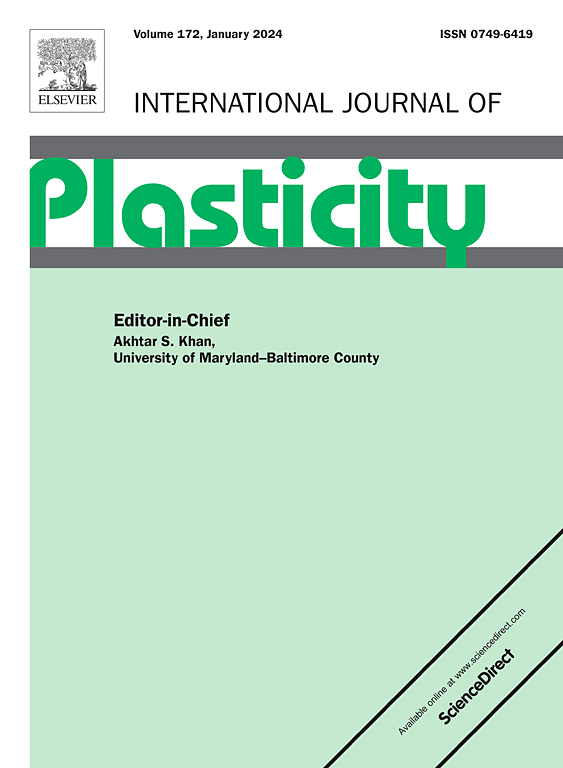An anisotropic damage visco-hyperelastic model for multiaxial stress-strain response and energy dissipation in filled rubber
Abstract
In this article, we introduce a novel physically-based anisotropic damage visco-hyperelastic model designed to predict the history-dependent inelastic behavior of multiaxially stretched filled rubber. The model integrates both the anisotropic Mullins effect and intrinsic viscosity through the consideration of internal physics, represented by two distinct networks: an elastic ground network and a superimposed viscous network. The rupture of molecular bonds within the elastic network chain backbone is modeled using statistical mechanics, while the effects of anisotropy-induced chain orientation at the upper scale are addressed through a microsphere-based scale transition method. The intrinsic viscosity is represented by the viscous network, which is governed by time-dependent equations to account for the viscous overstress. The influence of fillers is captured through the concept of strain amplification, applied to the two networks within the rubber matrix. The effectiveness of the model in capturing the biaxial behavior of filled rubber is evaluated by comparing its outputs with experimental data from a filled rubber system. This assessment specifically considers the impact of pre-stretching under various loading conditions and across a wide range of filler concentrations. Notably, it successfully predicts anisotropic stress-strain response and energy dissipation, and the coupled effects of damage and viscosity.

 求助内容:
求助内容: 应助结果提醒方式:
应助结果提醒方式:


